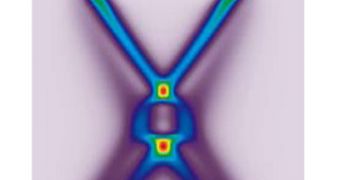A group of scientists has recently managed to obtain groundbreaking new data on the electronic structure of graphene. The material is a single-atom-thick carbon compound, which exhibits very peculiar physical and chemical properties. Discovered only 5 years ago at the University of Manchester, in the UK, graphene has in the meantime become one of the most widely-studied materials, due to the great promise it holds for improving and innovating the electronics of tomorrow.
The new work was carried out at the US Department of Energy’s (DOE) Lawrence Berkeley National Laboratory (Berkeley Lab). Scientists from the Advanced Light Source (ALS) used complex observations techniques to make more sense of what's going on inside the carbon compound. ALS experts Aaron Bostwick and Eli Rotenberg were the leaders of the international effort, which was coordinated at the Source. They reveal that plasmarons, a class of composite particles, play a huge role in providing more information on the properties of graphene.
“The interesting properties of graphene are all collective phenomena. Graphene’s true electronic structure can’t be understood without understanding the many complex interactions of electrons with other particles,” explains Rotenberg, who is an ALS beamline 7 senior staff scientist, and also the leader of the scientific program at the facility. The new work was carried out at this beamline facility. “Although plasmarons were proposed theoretically in the late 1960s, and indirect evidence of them has been found, our work is the first observation of their distinct energy bands in graphene, or indeed in any material,” the expert says. Plasmarons are made up of charge carriers, working in couple with plasmons. The latter are density oscillations that travel through graphene's electrons like sound waves on a liquid.
“Graphene has no band gap. On the usual band-gap diagram of neutral graphene, the filled valence band and the empty conduction band are shown as two cones, which meet at their tips at a point called the Dirac crossing,” adds Bostwick, who was also the lead author of the new investigation. He is a research scientist at the ALS beamline 7.0.1. At the crossing, he adds, electrons lose their mass, and move at speeds very close to that of light. Plasmons are capable of coupling with these fast-moving electrons, and this boosts their frequencies to 100 trillion cycles per second, the equivalent of 100 terahertz. The most advanced individual microprocessors operate at just a few gigahertz per second.

 14 DAY TRIAL //
14 DAY TRIAL //